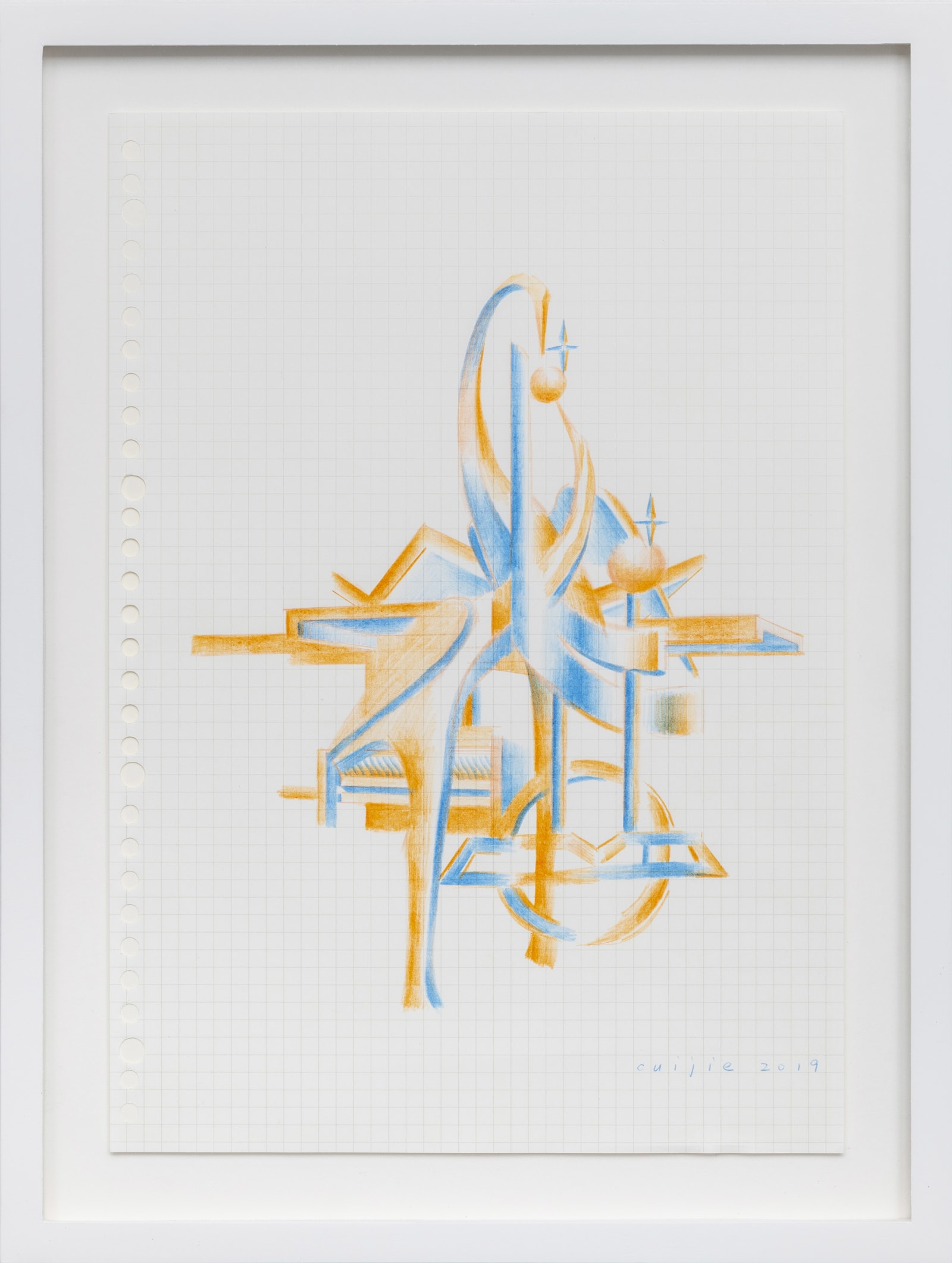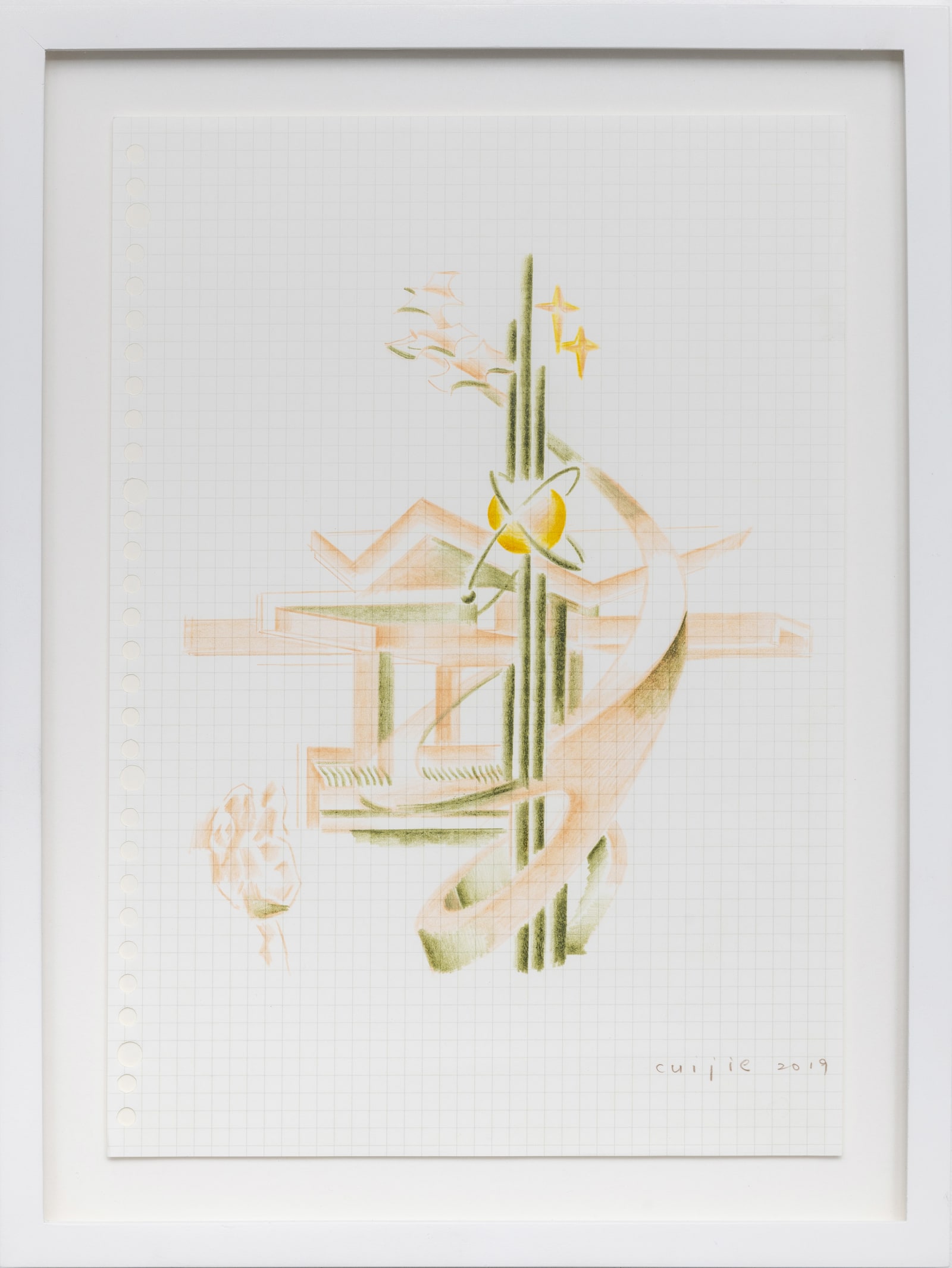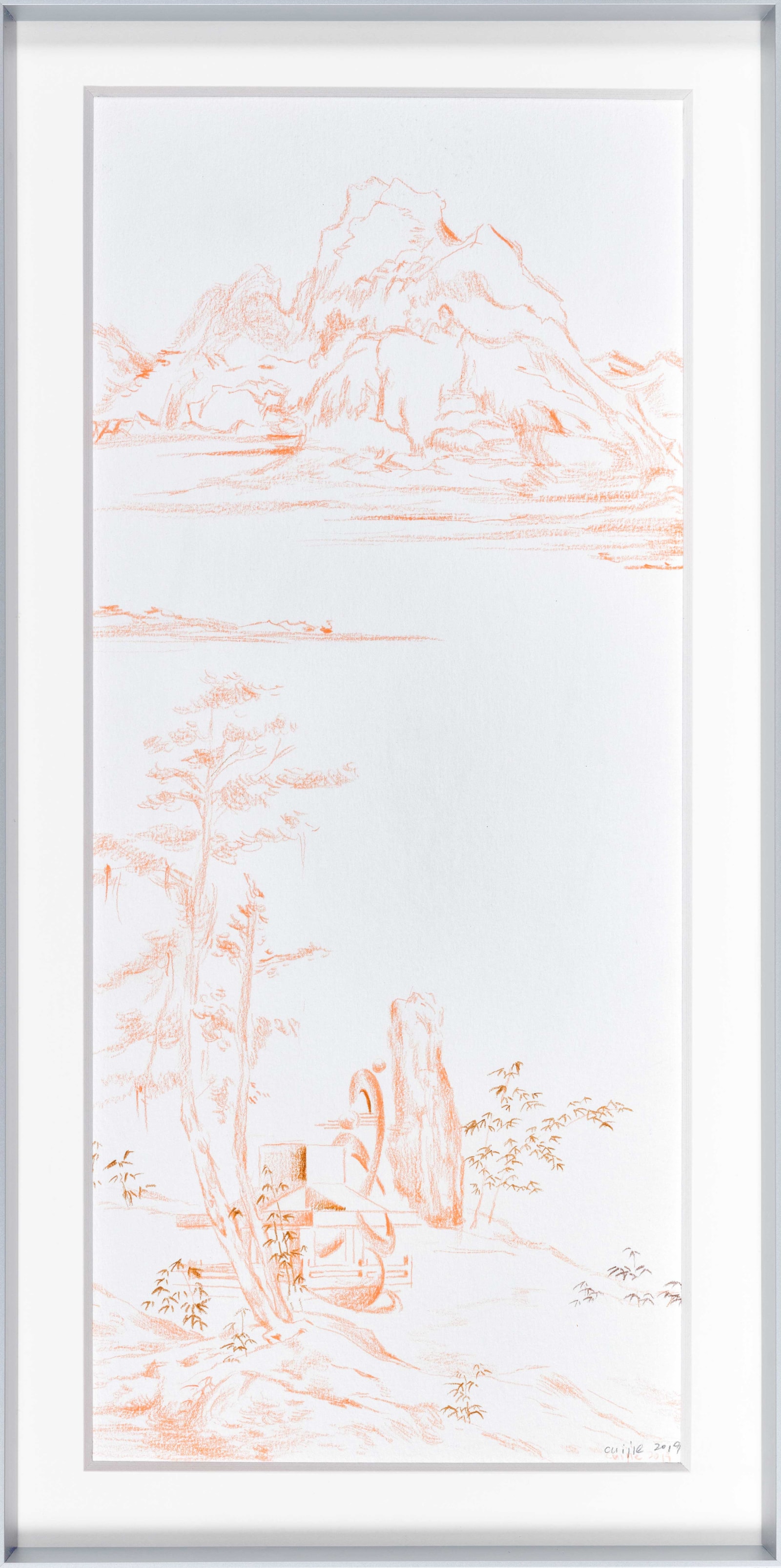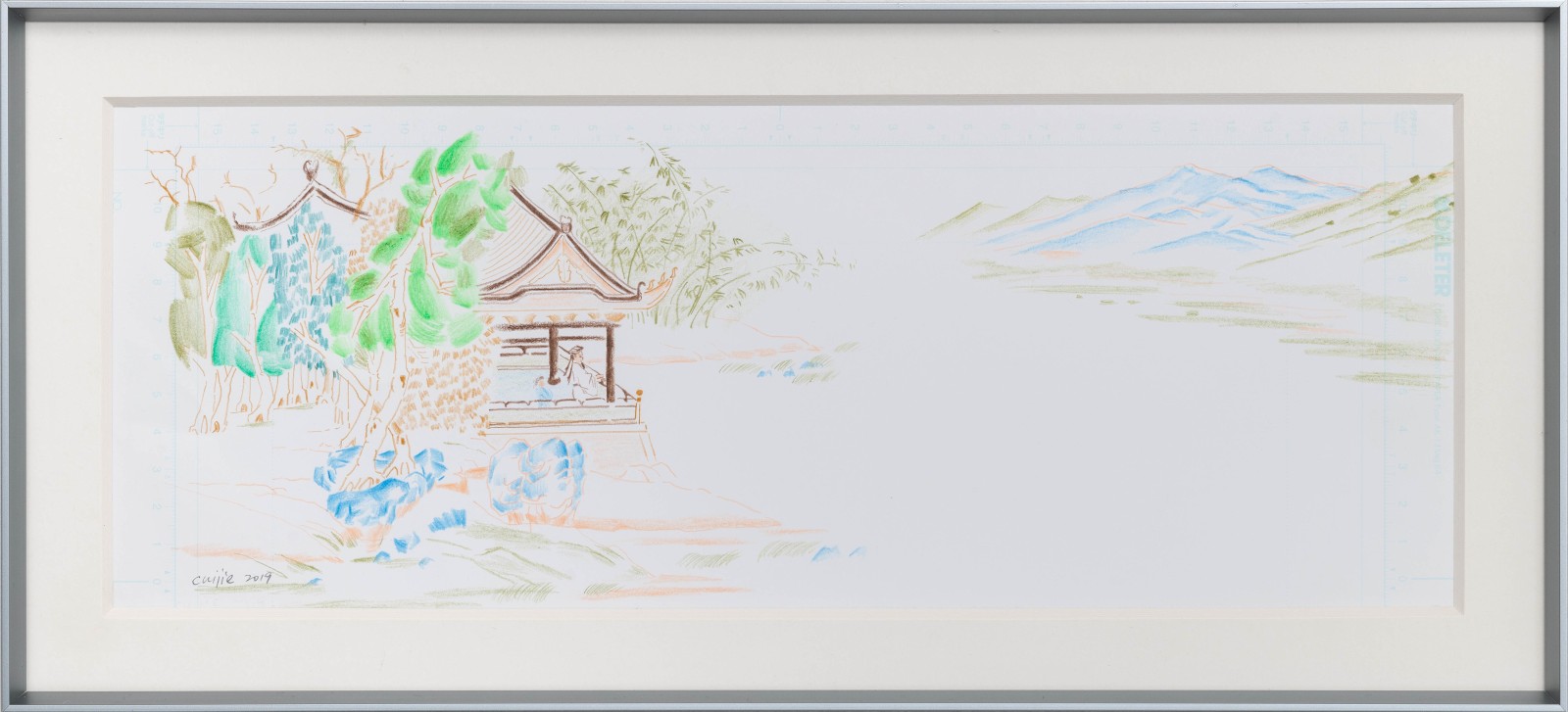Overview
"To look at landscape is an invitation not to look at any specific thing, but to ignore all particulars in favour of an appreciation of a total gestalt, a vista or scene, that may be dominated by some specific feature, but is not simply reducible to that feature."
W. J. T. Mitchell, Landscape and Power
Pilar Corrias Gallery is pleased to present The Peak Tower, an exhibition of new paintings by the Shanghai-based artist, Cui Jie, her first in the UK.
Cui’s meticulously executed images of modernist architectural structures are intended to reflect the rapid transformation of China’s cityscapes in the two decades since the beginning of its accelerated economic liberalisation in the late 1990s. As the Hong Kong based architect Ying Zhou writes: “The cities of the once self-isolated and ascetic communist nation have, by wiping out large swaths of existing urban fabric, become bastions of gleaming towers and lustrous malls: spatial manifestations of new capitalism.”1
Cui’s latest series of paintings examine the history of viewing pavilions on the Victoria Peak in Hong Kong. The Victoria Peak is a symbol of power and prosperity. It is the highest hill on the island and the summit of the city’s property market.
Over the course of 100 years, three viewing pavilions have been installed atop the hill. The first of these, designed by an unknown architect in the traditional Chinese style, was built at the beginning of the twentieth century. The structure was destroyed during the second world war when Hong Kong was occupied by the Japanese and replaced, in 1972, by the first iteration of the Peak Tower, designed by Hong Kong architect Chung Wah-nan. Its appearance was inspired by a combination of the shape of a Ding (a prehistoric bronze vessel), a traditional incense burner, and the ancient Chinese formation of a city gate complete with a watch tower. Upon completion, the tower became known among rich locals as “Lou Can Ting”, literally translated as the Fool’s Tower, mocking the mostly poor residents of the city below who would climb all the way up the vertiginous hill just for the view.
In 1993, in order to meet the rapidly increasing demand of booming tourism, the “Lou Can Ting” was demolished and replaced by a second tower, designed by British architect Terry Farrell. The construction was completed in 1997 and its rooftop viewing platform commands one of the world’s most magnificent views, overseeing the entirety of the Victoria Harbour. Today, this viewing pavilion mostly receives visitors and tourists from all over the world.
The pavilion—an independent structure that is topped by a roof, wall-less, open, permeating, flexible, delicate and elegant— was the preferred architectural form of Chung Wah-nan, architect of the Peak Tower’s first iteration. According to Chung: “The pavilion is not practical, but is made available for those who will enjoy life in a relaxed fashion, and this is the most significant spiritual use of its uselessness.”
Despite their architectural impracticality, the pavilion was absolutely crucial to the internal structure of the ancient Chinese empire. From Zhou to Qin and Han Dynasty, pavilions were used nationwide as government buildings in rural areas. They were principally utilised for defensive purposes and would occasionally serve as sites where ceremonies could take place. In other words, pavilions were nodes in an expansive national political network.
Over the course of several thousand years, the pavilion has been bestowed with new functions, before becoming a predominantly recreational space in the twentieth century and, in the instance of the Peak Tower, a locus from which to observe the steel and glass city of Hong Kong.
1 Ying Zhou, ‘Rearviews & Mirrors’, Frieze, February 2018, https://frieze.com/article/rearviews-mirrors
Cui Jie (b. 1983 Shanghai, China) applies various layers of images – some realistic, some imaginary – on her canvases, exploring multiple perspectives of various locations simultaneously. Each layer is meticulously executed to represent the transformation of China’s urbanscape. Painted with calculated and deadpan brushwork combined with a warm and affective palette, Cui’s landscapes and interiors make comparative studies of cities as distinctive models or laboratories of China’s open-and-reform policies. This is depicted as a personal history informed by the aesthetic madness in one time and place, ranging from the architectural confusion of Bauhaus, to Chinese propaganda, and to Soviet communist aesthetics. In essence, Cui Jie’s painting is a time capsule that re-imagines the past and the present.
Recent solo exhibitions include: To Make a Good Chair, Antenna Space, Shanghai (2019); The Enormous Space, OCAT Contemporary Art Terminal, Shenzhen (2018); Latter, Former, mother’s tankstation, Dublin (2016); and Cui Jie, START Gallery, Jaffa (2015). Her work has been included in recent group shows at Para Site, Hong Kong (2019); Guangdong Time Museum, Guangdong (2018); MoMa PS1, New York (2017); Ullens Center for Contemporary Art, Beijing (2017); Metro Pictures, New York (2017); Cass Sculpture Foundation, Sussex (2016); K11, Hong Kong and Shanghai (2016); Ullens Center for Contemporary Art, Beijing (2015); Tampa Museum of Art, Florida (2014); Museum of Fine Arts, St. Petersburg (2014); Oklahoma City Museum of Art (2014); Tianhong Mei Heyuan Arts Center, Hangzhou (2013); and Minsheng Art Museum, Shanghai (2012).



































